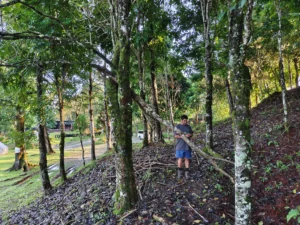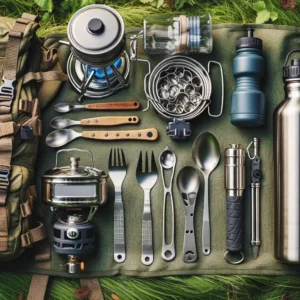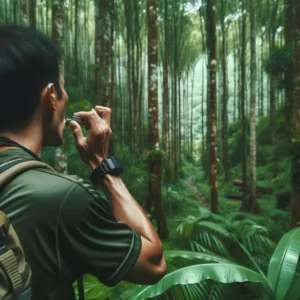Hiking in Mindanao: Explore the Peaks and Biodiversity of the Philippines’ Wild South
Hiking in Mindanao is a rewarding journey through one of the Philippines’ most biodiverse and culturally rich regions. From towering volcanoes to UNESCO-protected forests, this southern island offers unforgettable treks for adventurers craving untouched trails and breathtaking landscapes. Whether you’re a seasoned mountaineer or an eco-traveler, the trails of Mindanao offer a blend of physical challenge, natural beauty, and cultural depth.
Hiking in Mindanao is a truly rewarding experience, offering a journey through one of the Philippines’ most biodiverse and culturally rich regions. From majestic volcanoes to UNESCO-protected forests, this southern island presents unforgettable trails for adventurers seeking both challenge and stunning natural beauty.
Many of these mountains are safeguarded by indigenous communities, each with their own unique traditions, beliefs, and rituals. Because of this, access to certain trails often requires prior permission from the local tribes. Unlike more developed hiking destinations abroad, the terrain in Mindanao is often untamed, with trails that are rugged, rarely traversed, and sometimes only open during specific climbing seasons. This raw, untouched quality is exactly what makes these landscapes so breathtaking—lush, pristine, and rich with life.
Top Hiking Destinations in Mindanao
1. Mount Apo (Davao del Sur and Cotabato)
- Elevation: 2,954 meters (Highest in the Philippines)
- Difficulty: Advanced (3-4 days)
- Highlights: Mossy forests, sulfur vents, Lake Venado, panoramic summit views
- Significance: A dormant volcano and ancestral domain of the Bagobo and Manobo tribes, Mount Apo is also part of the UNESCO Global Geoparks Network candidate list.
📸 Suggested photo: Summit sunrise, Lake Venado campsite, sulfur vents
2. Mount Kitanglad (Bukidnon)
- Elevation: 2,899 meters
- Difficulty: Moderate
- Highlights: Dense cloud forests, endemic flora and fauna
- Significance: Part of the Kitanglad Range Natural Park, a protected area known for Philippine eagles and over 600 species of plants.
📸 Suggested photo: Cloud forest views, trail signage, mossy undergrowth
3. Mount Dulang-Dulang (Bukidnon)
- Elevation: 2,938 meters (Second highest in PH)
- Difficulty: Advanced
- Highlights: Spiritual mountain for Talaandig people, cool microclimate
- Significance: Often climbed with Mount Kitanglad as part of a twin peak hike. Also a biodiversity hotspot.
📸 Suggested photo: Summit views, cultural markers, native flora
4. Mount Kalatungan (Bukidnon)
- Elevation: 2,824 meters
- Difficulty: Challenging
- Highlights: Rich wildlife, fewer crowds, deep forest trails
- Significance: Home to endangered species and part of the Kalatungan Mountain Range Natural Park.
📸 Suggested photo: Forest trail scenes, river crossings, endemic bird species
5. Mount Hamiguitan (Davao Oriental)
- Elevation: 1,620 meters
- Difficulty: Moderate
- Highlights: Pygmy forest, bonsai fields, UNESCO World Heritage Site
- Significance: Known for its unique mountain ecosystem and rare species such as the Philippine eagle and pitcher plants.
📸 Suggested photo: Bonsai forest, trail boardwalk, UNESCO marker
Best Time to Hike in Mindanao
- Dry Season: December to May offers the best conditions.
- Avoid: June to November due to heavy rain, landslides, and trail inaccessibility.
Tip: Always check local weather forecasts and updates from PHIVOLCS and PAGASA.
Preparations and Safety Considerations
✅ Things to Prepare
- Local guide (required in most mountains)
- Government-issued ID and health clearance
- Trekking permit (apply through DENR or LGU)
- Proper gear: hiking boots, rain gear, sleeping bag, first aid kit
⚠️ Safety Reminders
- Always register with local tourism or barangay offices.
- Respect indigenous communities and their traditions.
- Watch out for slippery terrain, leeches, and unpredictable weather.
- Avoid solo hikes—group travel is safer and more eco-efficient.
Promoting Eco-Conscious Travel
Support sustainable tourism by following Leave No Trace principles. Respect wildlife, pack out trash, and avoid disturbing natural habitats. Choose certified eco-guides and support local communities by buying local goods or hiring porters.
🔗 Learn more at Leave No Trace Center for Outdoor Ethics
🔗 Info on protected areas: DENR Biodiversity Management Bureau
Environmental Responsibility: Hiking with Respect
Mt. Apo is fragile, and hiking it responsibly helps protect its beauty for future adventurers. Here’s how you can help preserve this majestic peak:
- Pack Out Your Waste: Take all trash back with you, even biodegradable items. Leaving waste disrupts the delicate ecosystem.
- Respect Wildlife: The mountain is home to rare species like the Philippine eagle. Don’t disturb plants, animals, or nesting areas.
- Skip Campfires: Campfires are generally discouraged due to forest fire risks. Bring a portable stove instead for safe, eco-friendly cooking.
A Cultural and Natural Marvel: What Makes Mt. Apo Unique?
Mt. Apo doesn’t just offer an intense physical challenge—it’s a treasure trove of biodiversity and culture, a place where nature and heritage blend. This mountain is often compared to other mountains in the Philippines, like Mt. Pulag and Mt. Kitanglad, for good reason:
- Highest Mountain in the Philippines: As the country’s tallest peak, Mt. Apo is a must for anyone looking to conquer the Philippines’ summits.
- Ecological Diversity: Mt. Apo’s unique ecosystems range from tropical forests to mossy highlands, offering hikers a variety of terrains and landscapes to explore.
- Cultural Depth: Few places blend natural beauty with cultural importance like Mt. Apo, whose spiritual significance resonates deeply with local indigenous groups. Embracing this heritage is part of the experience.
FAQ
Do I need a guide for hiking in Mindanao?
Yes, most trails—especially those in protected areas—require accredited guides for safety and environmental compliance.
Is hiking in Mindanao safe for tourists?
Generally, yes. Stick to established trails and consult with local tourism offices for security advisories.
When is the best month for hiking in Mindanao?
Between December and May, during the dry season.
What is the most beginner-friendly mountain in Mindanao?
Mount Hamiguitan offers moderate trails and rich biodiversity, making it great for first-timers.
Are permits needed for all mountains?
Yes. Permits are usually issued by DENR or the local government unit (LGU) managing the area.
From towering peaks to sacred forests, hiking in Mindanao is more than a physical challenge—it’s a journey into the heart of Philippine natural heritage. Embrace the adventure, but tread lightly. The mountains are calling, and they deserve our respect.





